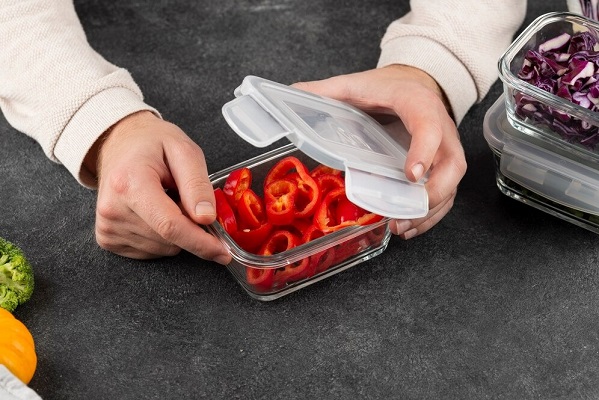Have you ever opened your freezer, grabbed what you thought was a well-preserved piece of meat, only to find it covered in ice crystals and completely dried out? Do you struggle to keep snacks crunchy, leftovers fresh, or lunches prepped without turning your fridge into a chaotic mess? If so, a portable vacuum sealer might be the kitchen buddy you need—but only if you use it correctly.
A portable vacuum sealer can be a real game-changer. It helps reduce waste, keeps your family meals organised, and can even save you money on groceries. In this post, we’re going to explore common rookie mistakes people make when using these devices and how to avoid them. You’ll learn about prepping the seal area, using the right bags, preventing freezer burn, and so much more. Think of this as your go-to handbook for everything related to portable vacuum sealers.
Why a Portable Vacuum Sealer Is a Kitchen Essential
A portable vacuum sealer brings a new level of convenience to your kitchen. Imagine buying meat in bulk from your local Australian butcher, dividing it into meal-sized portions, and sealing each pack tightly. You can then freeze or refrigerate these portions, keeping them fresher for longer. This simple process helps minimise everyday waste, which is especially handy when grocery prices are on the rise.
Plus, a portable vacuum sealer takes up less space than a bulky commercial model. Whether you have a spacious bench or you’re living in a cosy apartment, you can easily pull it out when needed. That makes it a perfect fit for anyone looking to upgrade their domestic kitchen setup for a bit more convenience. With the right maintenance, these little devices stand the test of time, proving their worth day in and day out.
Understanding the Biggest Portable Vacuum Sealer Mistakes
Mistakes can creep in when you first start using a vacuum sealer. Some errors are minor slip-ups, while others can lead to leaks, spoilage, or even damage to your machine. Here are the most common pitfalls and how to handle them.
Domestic vs Commercial Portable Vacuum Sealers
Domestic sealers are typically smaller and more budget-friendly. They’re perfect for anyone who doesn’t plan to do large-scale sealing daily. On the other hand, commercial-grade sealers tend to have stronger suction, a wider seal bar, and might even support double sealing. If you’re running a small catering business or selling in massive volumes, the higher investment can pay off by delivering faster, more consistent results.
Overfilling the Vacuum Sealer Bag
A frequent mistake is packing too much food into a single bag. While it might seem efficient, overfilling can cause several issues. When a bag is stuffed to the brim, the vacuum sealer may struggle to remove all the air, leading to an incomplete seal. Additionally, liquids or moist foods can spill into the machine, damaging the internal components. To prevent this, always leave at least two to three inches of space at the top of the bag. This extra room allows the sealer to properly remove air and create a tight seal. If you’re sealing liquids, consider freezing them first or using a vacuum sealer designed for wet foods.
Vacuum Sealing Liquids Without Precautions
Liquid foods like soups, sauces, and marinades can be tricky to vacuum seal. If not handled properly, liquids can get sucked into the vacuum chamber, potentially ruining the machine. Even if the liquid doesn’t reach the sealer, it can weaken the seal and cause leaks. To avoid this, freeze liquids in a container before transferring them to a vacuum bag. Alternatively, use the pulse vacuum function if your sealer has one, as this allows for better control over suction strength. Tilting the bag upward while sealing can also help keep liquids away from the seal area.
Storing Vacuum-Sealed Bags Improperly
Even with a perfect seal, improper storage can compromise your food. Exposing vacuum-sealed bags to direct sunlight or heat sources can cause spoilage, while stacking heavy items on top can puncture the bags. Sharp-edged foods stored nearby can also cause accidental tears. To keep your vacuum-sealed items in the best condition, store them in a cool, dark place like a pantry or freezer. Using bins or organisers can help prevent crushing and keep everything neatly arranged.
Neglecting Machine Maintenance
Like any appliance, a vacuum sealer requires regular maintenance to function properly. Failing to clean the machine or check for blockages can lead to reduced suction power, burnt-out sealing elements, and a shorter lifespan. To keep your vacuum sealer in top condition, clean the sealing strip and vacuum channel regularly. Store the device in a dry place to prevent moisture damage, and refer to the manufacturer’s instructions for specific care guidelines.
Conclusion
We’ve covered a multitude of mistakes to avoid when using a portable vacuum sealer, from skipping essential prep work to overfilling bags. The biggest takeaway is that a little care goes a long way—clean your machine regularly, use compatible bags, and pay attention to moisture levels or food debris that could compromise your seal. When you address these pitfalls, you’ll enjoy consistently fresh results and reduce the threat of wasted groceries.
Ultimately, a portable vacuum sealer is more than just a fancy gadget; it’s a helping hand in achieving a tidy kitchen, reducing waste, and enjoying the flavours you love. Keep these mistakes in check, and you’ll soon harness your sealer’s full potential. Here’s to more efficient meal prep, better freezer management, and a life free from the headaches of freezer burn and wasted produce!
